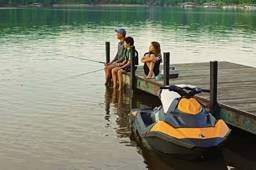Q: Is there an ecologically sound method of fertilizing lawn that is located close to a well? I am concerned with contaminating our drinking water. Our well is a 70-foot drilled well in sandy soil.
– Larry Haldeman; Phillips, Wis.
A: As with eating chocolate or watching football on Sundays, moderation is the key to effectively fertilizing close to your well – or your lake, river or pond – without fear of compromising precious water quality.
Rather than giving that part of your lawn a full-rate application of fertilizer (typically a 25-5-5 nitrogen, phosphorus and potassium mix) three times a year, switch to a half-rate application. The reduced application will help ensure the fertilizer won’t penetrate the 70 feet of sand to your water supply.
Another tip is to look for fertilizer with water insoluble nitrogen (look for a WIN symbol on the bag). The WIN will be released gradually into the soil, further protecting your well from contamination.
If you’re concerned about the environment, consider a few alternatives:
• Choose an organic fertilizer. There are environmentally friendly fertilizers out there, but they are usually slow-release products that could also contaminate a well. Call your local county horticulture agent for suggested products.
• Don’t fertilize at all. Can you put up with a lawn that isn’t quite so lush? Many people fertilize automatically or feel it’s necessary. Ask yourself if you need to have a perfect lawn at your cabin.
• Plant a prairie. Prairie grasses are simple to maintain, add an attractive element to a landscape, encourage wildlife and are great at filtering nutrients from the soil and protecting your water source. Wild Ones, a national native gardening organization, can help you with this one. Go to www.for-wild.org for advice and to see if there is a Wild Ones chapter in your area.
Keep in mind it’s not likely that fertilizer will make it down 70 feet and impact your water supply. A bigger issue may be fertilizer somehow getting inside the well casing during application. If your well is sufficiently capped, you don’t have a lot to worry about. However, if you live near a lake or river, it is likely that the fertilizer will make its way into the water, potentially fertilizing algae blooms and other undesirables.
If you still have serious reservations about fertilizing, have your water quality tested by the county or state health department before you choose a fertilizing option. This will ensure your water is safe now and provide a basis for future testing.
– J.K.







